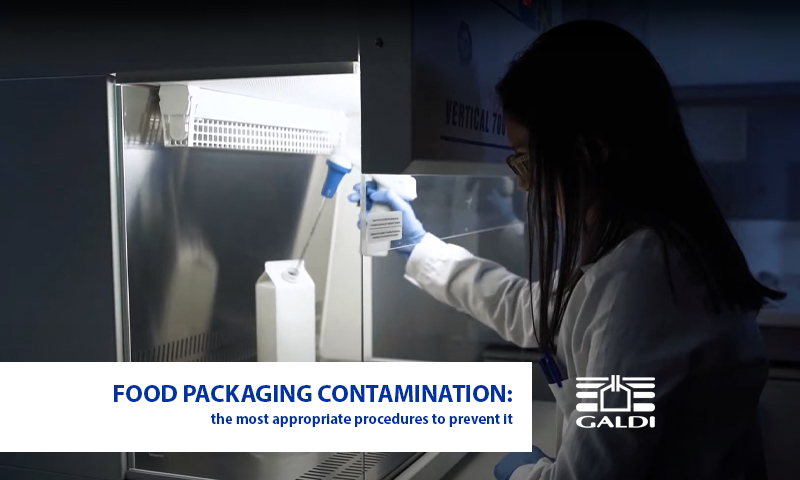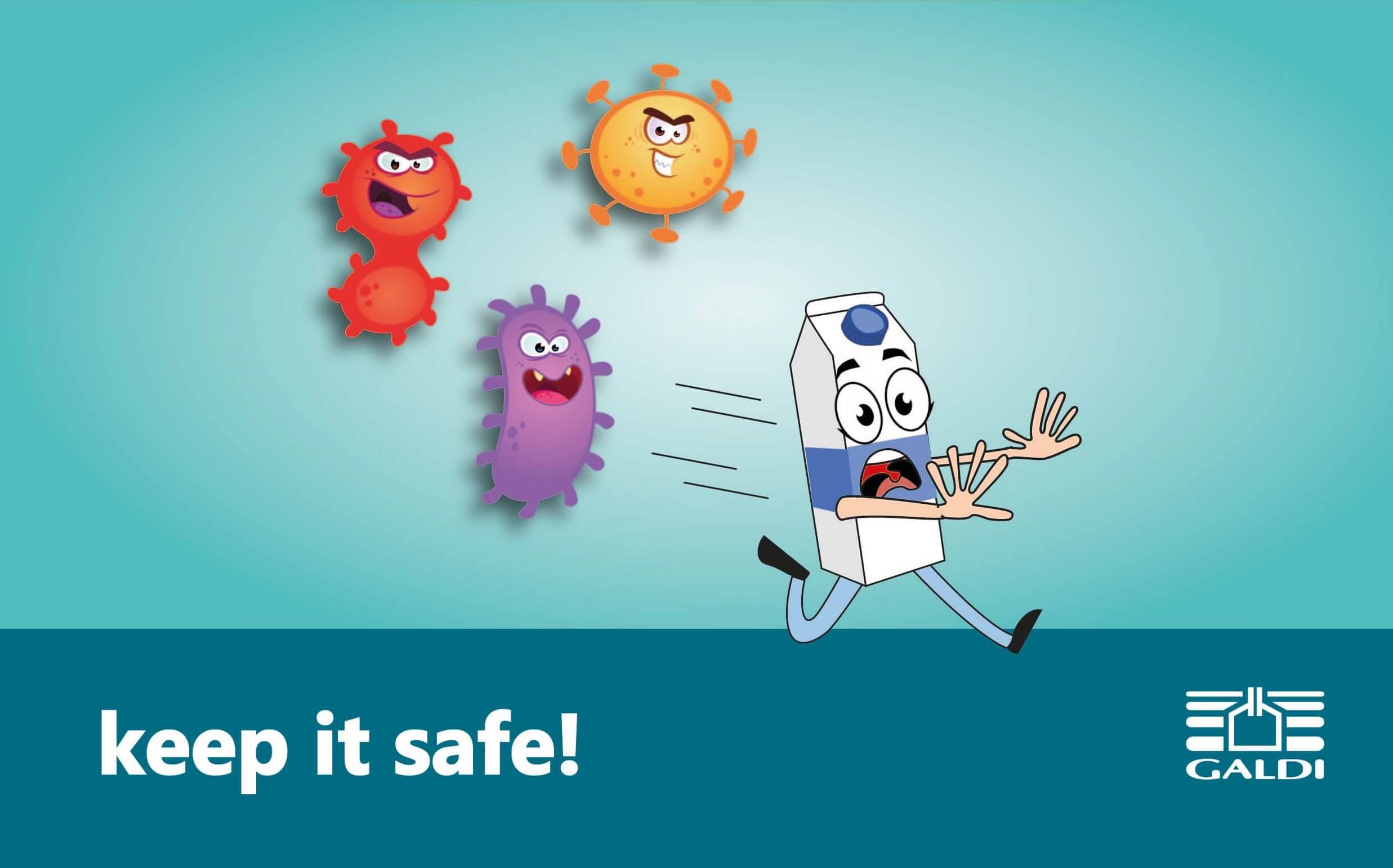Preventing Contamination in Food Packaging
With the help of Ilaria Trento, Food & Microbiology Scientist at FILL good, we would like to share some information and tips to prevent contamination during the food packaging process

We have already discussed the main sources of pollution in food products and the best practices to reduce contamination risks in food processing plants.
Today we'd like to go a bit more into detail, highlighting potential contamination causes and the most appropriate procedures to prevent them, with regards to:
- production area (as a whole)
- procedures for operators
- food packaging
- fillers' cleaning
PRODUCTION AREA
In order to obtain a packaged product that ensures consumer safety and compliance with current regulations, several factors come into play:
- quality of raw materials
- pasteurization process
- hygienic performance of the filling machine
- compliance with hygienic regulations during the process
In many cases, contamination actually occurs before the product is packaged and outside the filler.
Therefore, during planning and construction, the packaging area and adjacent space must be designed to reduce the presence of bacteria and moulds that can favour the contamination of food products:
- surfaces must be cleanable (ceilings, floors, walls)
- spaces must allow for the seamless flow of materials and people
- the machine's recirculating water must be drinkable, with a low bacterial load
- clearly, the waste disposal area must be outside the production area.
It is important to plan the production area with processes in mind, to avoid that certain operations create conditions facilitating contamination – e.g. leaving preformed carton boxes open in moist production areas or near draughts.
In this case, seeking advice on how to optimise the packaging process or to design the production area's layout may be helpful.
What else can you do to prevent contamination in the packaging area?
- comply with hygienic procedures
- properly train operators – who are also important to report any machine alarms during cleaning cycles
- keep filling rooms' doors closed, in order to avoid potentially polluting air flows
- carry out periodic pest controls (insects, rodents)
Often it's the small actions that taken together make the difference in the ability to prevent the pollution of the final product.
By keeping the production area clean and tidy, without material that could lead to humidity and dust build-up lying around, potential airborne contamination can also be prevented.
PROCEDURES FOR FILLING MACHINE OPERATORS
Food filling machine operators – including maintenance technicians and any other staff member involved in production activities - need to receive proper training in hygienic regulations to be applied in the packaging environment.
They can themselves be a source of contamination in the production plant, but also act as the first "guardians of food safety". Training makes the difference.
With a specific training on hygienic and health regulations for food packaging – supported by suitable posters in the production site - filling machine operators can maintain high standards for every single operation and during the whole process.
To reduce the risk of contamination through humans, in food filling machines with the best hygienic performance levels, many operations, such as the following, have been automated or optimised:
- automatic cleaning and sanitation cycles (CIP, SIP)
- commands on external display to avoid doors opening
- simplified parts replacement for maintenance purposes

FOOD PACKAGING
Composite packaging cartons are an important and often overlooked source of contamination through microorganisms.
If they are not handled and stocked properly, the levels of microbial contamination can grow considerably, increasing the risk of transferring degradation-inducing, pathogenic or toxigenic microorganisms to packaged products.
Checking the wear condition of preformed carton boards and replacing those that have been overly damaged during transport and storage helps prevent the filler's downstream contamination problems.
Regarding storage, packaging material should be kept:
- in a room with controlled temperature and humidity conditions
- far from detergents and other chemical substances, to avoid the absorption of vapours that could alter food flavours
Furthermore, the storage room should be clean, dry and properly ventilated, mould- and odour-free, as well as protected from direct sunlight.
It is also advisable to handle stocks according to the FIFO (First In First Out) principle.
FILLERS' CLEANING
Fillers planned according to the principles of Hygienic Design are conceived to optimise the cleaning process and to avoid that the packaging machine's components, and especially the materials in contact with the product, become themselves a source of contamination.
Nonetheless, it is always advisable to carefully follow the manufacturer's instructions regarding the fillers' cleaning and sanitisation operations.
To prevent the development of microorganisms inside the packaging machine, it is especially important to:
- accurately remove organic residues
- always perform visual checks
- regularly sanitize surfaces, on the basis of production hours
- carry out ATP swab testing
In the worst-case scenario, the proliferation of microflora on a surface can lead to the formation of a biofilm, a microbial cells aggregate which becomes a source of contamination and can:
- pose a danger to human health due to the potential presence of pathogenic microorganisms
- damage production plants, causing the formation of biofouling in the equipment, thus reducing operational efficiency
When a biofilm is consistently present on a surface, removing it is very difficult, because microorganism aggregates are much more resistant to disinfectants than free-floating microorganisms.
Removal requires very aggressive and expensive treatments, which are not always 100% effective.
How can we then avoid contamination in food packaging and, in particular, the formation of biofilms?
As we set out to emphasize in this post and as the old saying goes, the only real solution is: “Prevention is better than cure”.
Would you like to discover more about the efficacy and advantages of food packaging plants designed and produced by Galdi?
